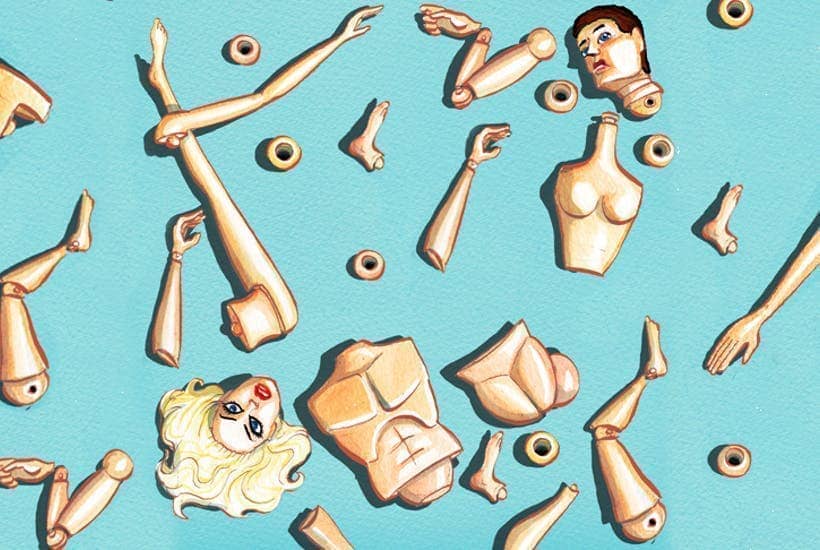Lisa Littman, a doctor and researcher, recently surveyed ‘detransitioners’ — people who thought they were transgender then changed their minds. The majority, 55 per cent, ‘felt that they did not receive an adequate evaluation from a doctor or mental health professional before starting transition.’ Sadly, it seems, their identity issues were more complicated than simply being trans. Many of these individuals are now living with the consequences of medical treatments that failed to help their gender issues and may have caused permanent physical and psychological damage.
There is no objective diagnosis for transgenderism, and the evidence supporting hormonal and surgical ‘reassignment’ as an effective remedy for gender dysphoria (the feeling of being at odds with one’s sex) can be sketchy. Meanwhile, there is plenty — not least the risk of infertility and loss of sexual function — to suggest that so-called gender reassignment is very often a bad idea.
In the mid 20th century, sexologists and surgeons began to experiment with ‘sex change’ interventions for a tiny number of (mostly male) patients who, for complicated psychological reasons, wanted to live as the opposite sex. Of course, no one can literally change their sex. For humans, sex is determined at conception; it is evident even in fossilised bones discovered thousands of years after a person’s death. Still, with the help of medical technology, a patient could undergo experimental hormone treatments and surgical procedures, enabling him to more closely resemble a woman. Back then, the debate wasn’t whether ‘trans women are women’ but whether these medical interventions really helped alleviate gender-related confusion and distress.
Some reckoned they did. In 1965, Johns Hopkins University carried out sex change surgery, the first American academic institution to do so. The experiment was discontinued in 1979, under psychiatrist-in-chief Paul McHugh, who had major concerns about the treatment’s efficacy.
‘In those days we weren’t thinking that we should do something because somebody would like us to do it,’ McHugh tells me. ‘We would be doing it because we were told that much in their life would improve.’
But when researchers at Hopkins followed up with the patients who had had the surgery, the evidence of improvement was not always clear cut. The researchers decided to stop until someone could show conclusively that the surgeries were beneficial to the patients.
Transgender activists focus on the treatments’ satisfaction rates, insisting that regret is rare. According to data collected by the World Professional Association for Transgender Health (WPATH), that would appear to be true. However, focusing on patient satisfaction risks losing sight of the bigger picture of long-term outcomes.
The burden of proof, after all, ought to be on those wishing to conduct an experiment. So far, results here don’t impress. In 2004, the Guardian commissioned research from Birmingham University which looked at more than 100 follow-up studies of post-operative transsexuals. Researchers found no conclusive evidence that gender reassignment is beneficial for patients. The trials were often flawed, with results skewed in favour of physical rather than therapeutic interventions. Potential complications of hormones and genital surgery, including deep vein thrombosis and incontinence, were also not always properly taken into account. Some studies failed to track patients.
A robust follow-up is a 2011 study by the Karolinska Institute in Sweden, which examined the outcomes of more than 300 patients over three decades. Its findings starkly contradict the activist narrative. Around ten years after surgery is when a post-operative transsexual person’s mental health can begin to most rapidly deteriorate. Post-operative transsexuals also appeared to be at a higher risk of killing themselves than comparable non-transgender peers.
As Ryan Anderson, author of When Harry Became Sally: Responding to the Transgender Moment has documented, a more recent 2014 research review conducted by Hayes Inc. gave studies of gender reassignment treatments its lowest rating for quality. It said that: ‘Evidence regarding quality of life and function in male-to-female adults was very sparse.’ In 2016, under the Obama administration, a low evidence base was cited as a reason not to cover sex reassignment surgeries as part of the government’s Medicare plans. It was noted that ‘many studies that reported positive outcomes were exploratory type studies (case-series and case-control) with no confirmatory follow-up.’
Some people swear by gender reassignment treatments, claiming their lives have been enriched and even saved. This is great for them, yet standards of care ought not to be based solely on subjective testimonies. Despite the increased social acceptance and availability of hormones and surgery, the transgender population has been found to be overrepresented in homelessness, suicidal ideation, unemployment, prostitution, and HIV contraction. There is very little reason to think that more hormones and surgeries will do anything to change that.
When Johns Hopkins reintroduced its gender reassignment surgeries in 2017, it was plastic surgeons who were likely to be rubbing their hands, not the psychiatrists who continued their work helping patients suffering from gender-related distress with non-surgical treatments.
American hospitals have large financial incentives to carry out these procedures. In the United States, the sex reassignment surgery market is set to reach a market value of more than $1.5 billion (£1 billion) by 2026. Some operations cost up to $53,700 (£40,000); performing 50 of these a year brings in $2.7 million (£2 million). It’s easy to see how, with such a business model, one might prioritise customer satisfaction over long-term patient welfare. Meanwhile, in the UK, gender identity referrals are rising. In 2018, there were 2,519 referrals for young people, shooting up from 97 in 2009.
Historically, the population seeking transgender surgeries has been primarily male-to-female. However, what with the recent rise in females presenting at gender clinics, this will likely change — bringing new challenges. Removing a penis is easier than creating one. One increasingly popular method of ‘phalloplasty’ involves grafting the arm for skin, fat, nerves, arteries and veins then wrapping it round a tube to construct a pseudo-penis. If all goes to plan, this ‘neophallus’ can be used for urination and penetrative sex. An erection of sorts can then be achieved through a prosthetic pump. There’s a lot that can go wrong.
Some phalloplasty patients’ testimonies are disturbing, to put it mildly. Patients complain of pain, bleeding and tissue damage. Wounds, as well as disfigured and non-functional phalluses, are also reported. But to win a malpractice case, a patient must prove that the doctor breached informed consent or the standard of care, all while complying with a statute of limitations of as little as two years. It’s a high bar.
In order to give informed consent to gender reassignment, the information a patient is provided with has to be accurate and clear. But is that always the case? In 2020, the NHS changed its website on puberty blockers from saying that the effects were ‘considered to be fully reversible’ and ‘can usually be stopped at any time,’ to the admission that ‘little is known about the long-term side effects of hormone or puberty blockers in children with gender dysphoria’ and that ‘it is not known what the psychological effects may be.’
Jazz Jennings, a trans icon and teen star of the American reality show I Am Jazz, says she has ‘no regrets’ about taking puberty blockers, cross sex hormones, and undergoing vaginoplasty surgery all before her 18th birthday. However, Jazz’s surgeon Dr Marci Bowers — the first transgender woman to perform gender surgeries — recently expressed doubts about such treatment. Bowers told American journalist Abigail Shrier that ‘there was naïveté on the part of paediatric endocrinologists’ who advised early intervention with puberty blockers ‘thinking that just this magic can happen, that surgeons can do anything.’ The idea of blocking puberty ‘sounded good in the very beginning,’ but there are serious downsides.
As Susie Green, CEO of Mermaids — Britain’s controversial child-sex change charity — explained about her son-turned-daughter: puberty blockers can stunt penile growth. Later on, this can make the surgical task of ‘penile inversion’ much trickier. Bowers also worries about her young patients’ ‘reproductive rights…[and] sexual health later and ability to find intimacy.’
Maybe some of these doubts help explain why the Karolinska Hospital in Sweden has ceased to prescribe puberty blockers and cross sex hormones to under 18s outside of research settings. Or why Finland’s national gender program is now actively encouraging therapeutic treatment. Or why the UK’s high court found it unlikely that a child could give informed consent to be prescribed puberty-blocking drugs and mandated court approval in certain situations for clinicians wishing to prescribe them.
In September, the Court of Appeal overturned this decision, citing Gillick competency, from the landmark case allowing minors to independently access contraception should a clinician declare them sufficiently mature. There’s a certain logic to that. If a minor can consent to sex, why not to sex change?
Yet, once again, there’s an overemphasis on autonomy here. And it may well be that short-term satisfaction is being focused on at the expense of objective evidence and a patient’s long-term interests. Conveniently, such an approach allows clinicians to experiment on patients without the burden of responsibility.<//>
Got something to add? Join the discussion and comment below.
Get 10 issues for just $10
Subscribe to The Spectator Australia today for the next 10 magazine issues, plus full online access, for just $10.




















Comments
Don't miss out
Join the conversation with other Spectator Australia readers. Subscribe to leave a comment.
SUBSCRIBEAlready a subscriber? Log in